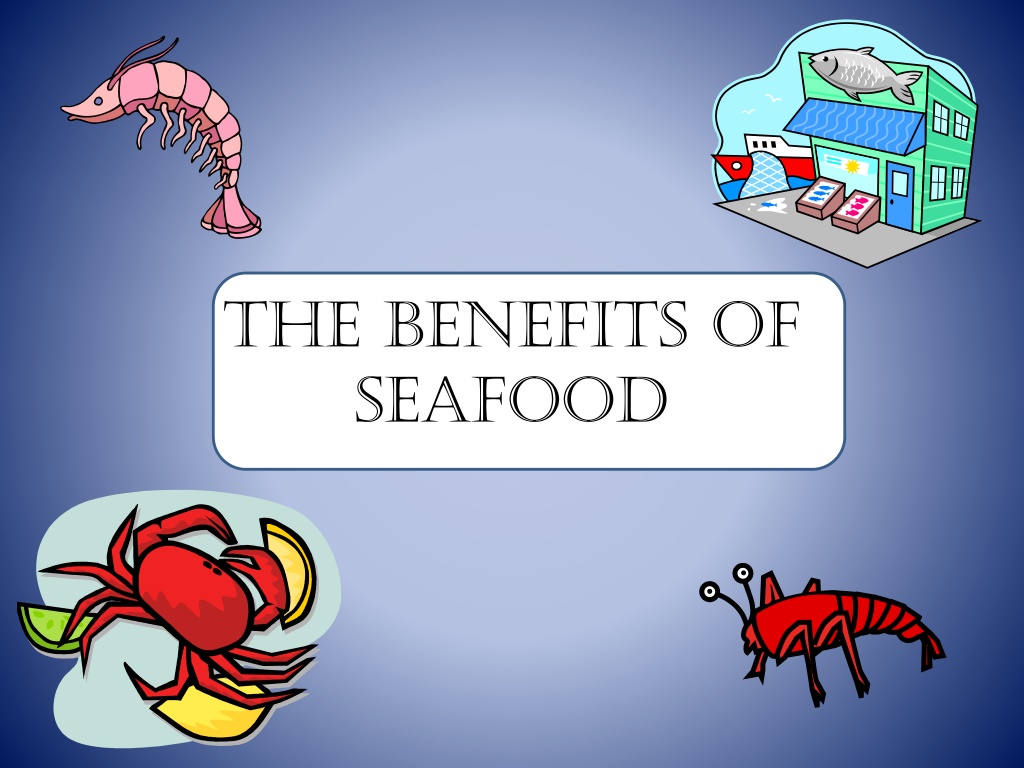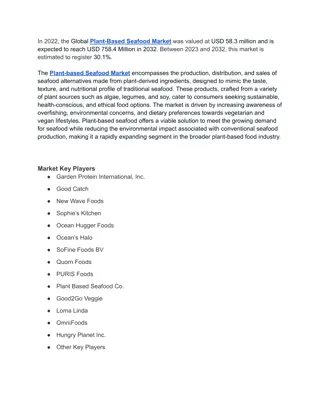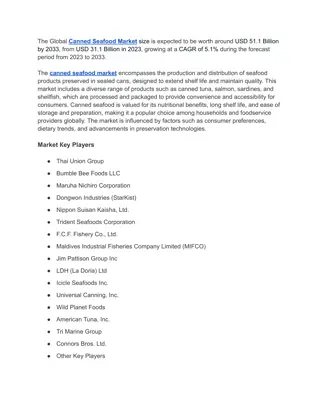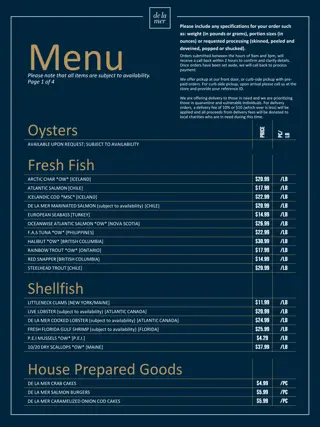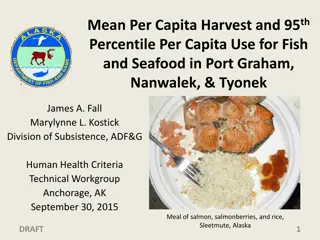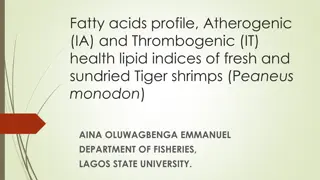Exploring the Health Benefits of Seafood
Delve into the advantages of incorporating seafood into your diet. Discover why seafood is good for your health, the importance of omega-3 fatty acids, various types of seafood rich in omega-3, recommended consumption levels, and the preventive benefits against chronic diseases. Learn from expert insights provided by the Pennington Biomedical Research Center focusing on nutrition, preventive medicine, and research in health-related areas. Join research studies for a chance to contribute to healthier living practices and disease prevention.
Download Presentation

Please find below an Image/Link to download the presentation.
The content on the website is provided AS IS for your information and personal use only. It may not be sold, licensed, or shared on other websites without obtaining consent from the author. Download presentation by click this link. If you encounter any issues during the download, it is possible that the publisher has removed the file from their server.
E N D
Presentation Transcript
The Benefits of Seafood
Seafood Alligator Crab Shrimp Fish Crawfish Oysters
MyPyramid Seafood is a part of the Meat and Bean Group in MyPyramid.
Why is Seafood Good for Us? High in Protein Low in Saturated Fat Rich in Unsaturated Fat Omega-3 Fatty Acids
Omega-3 Fatty Acids Health and Growth Development Blood Pressure Brain Function and Memory Triglyceride Levels Decrease Possibility of Numerous Diseases
Types of Seafood High in Omega-3 Fatty Acids Salmon Rainbow Trout Tuna Mackerel Black Cod Sardines
How Much and How Often Should We Eat Seafood? MyPyramid recommends 3 to 5 ounces of protein daily. American Heart Association recommends that we eat two 3.5 ounce servings of fish a week.
Recap Seafood is part of the Meat and Bean Group in MyPyramid. Seafood and cold water fish are good sources of omega-3 fatty acids. Omega-3 fatty acids prevent many chronic diseases of aging. It is recommend that we consume several servings of fish and seafood each week.
Mission: To promote healthier lives through research and education in nutrition and preventive medicine. The Pennington Center has several research areas, including: Clinical Obesity Research Experimental Obesity Functional Foods Health and Performance Enhancement Nutrition and Chronic Diseases Nutrition and the Brain Dementia, Alzheimer s and healthy aging Diet, exercise, weight loss and weight loss maintenance Authors: Beth Kalicki Heli Roy, PhD, RD Division of Education Pennington Biomedical Research Center The research fostered in these areas can have a profound impact on healthy living and on the prevention of common chronic diseases, such as heart disease, cancer, diabetes, hypertension and osteoporosis. The Division of Education provides education and information to the scientific community and the public about research findings, training programs and research areas, and coordinates educational events for the public on various health issues. We invite people of all ages and backgrounds to participate in the exciting research studies being conducted at the PenningtonCenter in Baton Rouge, Louisiana. If you would like to take part, visit the clinical trials web page at www.pbrc.edu or call (225) 763-3000. 10/10
